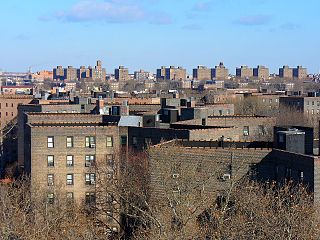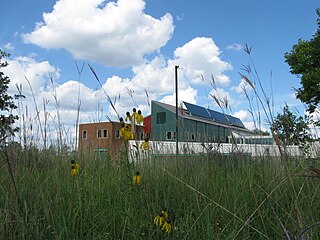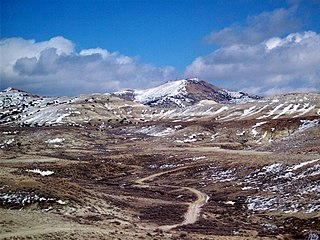Coordinates: 41°29′47.15″N109°26′19.21″W / 41.4964306°N 109.4386694°W

A geographic coordinate system is a coordinate system that enables every location on Earth to be specified by a set of numbers, letters or symbols. The coordinates are often chosen such that one of the numbers represents a vertical position and two or three of the numbers represent a horizontal position; alternatively, a geographic position may be expressed in a combined three-dimensional Cartesian vector. A common choice of coordinates is latitude, longitude and elevation. To specify a location on a plane requires a map projection.
Contents


Scott's Bottom Nature Area or simply Scott's Bottom is a park located along the Green River in southwestern Wyoming and is maintained by the city of Green River, Wyoming. [1] It offers several trails for recreation as well as an archery range, shooting range, and a small paintball complex that was new as of 2005, however has since been removed. The new outdoor Archery range was built in 2006 and 2007. Scott's Bottom is named for the surrounding few acres, which is simply a wooded area next to the river. There are several other "bottoms" in the area as well. During the warmer months, residents also enjoy fishing in the Green River. Scott's Bottom is also used by local residents with ATVs and other four wheel drive vehicles. Local wildlife in the park include deer, owls, and many other species of animals native to southwestern Wyoming. [2]

Wyoming is a state in the mountain region of the western United States. The state is the 10th largest by area, the least populous, and the second most sparsely populated state in the country. Wyoming is bordered on the north by Montana, on the east by South Dakota and Nebraska, on the south by Colorado, on the southwest by Utah, and on the west by Idaho and Montana. The state population was estimated at 586,107 in 2015, which is less than 31 of the most populous U.S. cities including neighboring Denver. Cheyenne is the state capital and the most populous city, with an estimated population of 63,335 in 2015.

Green River is a city in and the county seat of Sweetwater County, Wyoming, United States, in the southwestern part of the state. The population was 12,515 at the 2010 census.

Archery is the art, sport, practice, or skill of using a bow to shoot arrows. The word comes from the Latin arcus. Historically, archery has been used for hunting and combat. In modern times, it is mainly a competitive sport and recreational activity. A person who participates in archery is typically called an archer or a bowman, and a person who is fond of or an expert at archery is sometimes called a toxophilite.
Scott's Bottom also goes by the name FMC Park partially named because of a grant from the FMC corporation, which is one of the area's biggest employers.
FMC Corporation is an American chemical manufacturing company headquartered in Philadelphia, Pennsylvania. The company was founded by chemist John Bean in 1883 as the Bean Spray Pump Company in Los Gatos, California, producing piston pumps for insecticides. In 1928, Bean Spray Pump purchased two companies: the Anderson-Barngrover Co. and Sprague-Sells Co. At this time the company changed its name to Food Machinery Corporation, and began using the initials FMC. In 1941 the company FMC received a contract to design and build amphibious tracked landing vehicles for the United States Department of War, and afterwards the company continued to diversify its products. Later FMC produced the M113, one of the most widely used AFVs ever. FMC employs 7,000 people worldwide, and had gross revenues of US$2.8 billion in 2017.
In 2005, the aging bridge that crosses the river from the city side (and is the park's primary entrance) was replaced with a more stable and secure bridge. [3] In 2010, that bridge is being replaced by a concrete bridge being constructed by the Wyoming Department of transportation. Access to the park begins in Green River on East Teton Blvd. From the west, the park can be accessed via a back road that begins on US 191 southwest of Rock Springs.

Rock Springs is a city in Sweetwater County, Wyoming, United States. The population was 23,036 at the 2010 census, making it the 5th most populated city in the state of Wyoming, and the most populous city in Sweetwater County. Rock Springs is the principal city of the Rock Springs micropolitan statistical area, which has a population of 37,975. Rock Springs is known as the Home of 56 Nationalities because of the influx of immigrants from all over the world who came to work in the coal mines that supplied the fuel to power the steam engines of the Union Pacific Railroad. The city's rich cultural heritage is celebrated each summer on International Day, a festival where the foods, costumes, and traditions of residents' ancestors are recreated and enjoyed at Bunning Park in downtown Rock Springs.






















